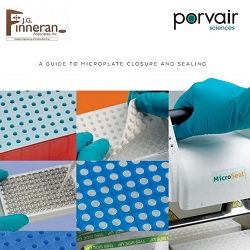It’s a routine operation performed thousands of times each day in laboratories around the world, but it’s still possible to get microplate sealing wrong.

Microplate sealing guide from Porvair and Finneran is available as hard copy or PDF
A properly sealed microplate will protect its samples from contamination by dust, spores, or other atmospheric detritus, prevent spillage, and eliminate evaporation.
All of these are vital to preserving sample integrity.
Even with the growing standardisation of microplate dimensions, the range of closures and seals available and the variety of samples contained means that the choice of the best method is not necessarily obvious.
To address this issue, Porvair Sciences and JG Finneran have produced an informative guide to help lab scientists identify the optimum seal and closure device for different types of microplate.
The guide discusses the different benefits of the most common types of reusable and single-use microplate closures.
Reusable seals include rigid lids, friction seals and cap mats, while and single-use closures include thermal and adhesive seals.
An introduction is also provided to Porvair Sciences’s range of manual and automated microplate capping and sealing devices.
An selection chart helps scientists to make the most appropriate choice for a application, including factors such as the length of time the seal is needed, the microplate well format, and whether a manual or automated closure device is being used.
